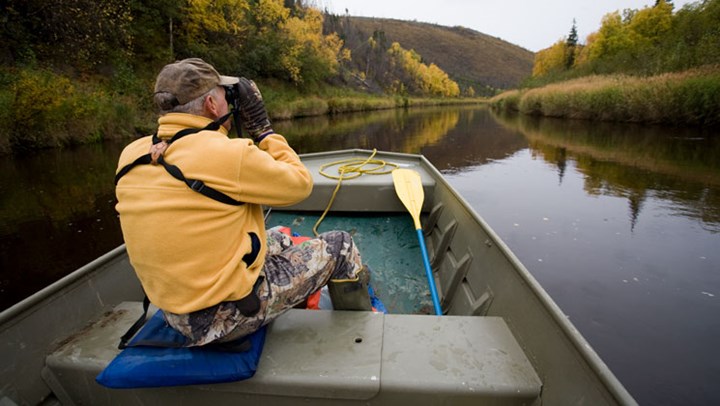
by Frank Miniter - Tuesday, October 4, 2016

I recently ran into a pile of hikers at the top of Slide Mountain, the tallest mountain in New York State’s Catskill Mountains. When I got there I learned something that separates hunters from those who don’t hunt. It is something that few on either side understand, but that once understood bridges the divide in a marvelous way.
First of all, I hadn’t expected to climb to what used to be the lookout on top. I say used to because New York State’s constitution prevents the New York Department of Environmental Conservation from thinning the trees there, or anywhere else on park lands, even to keep the view of mountains and the Hudson River way beyond in view.
When I heard a hiker, who’d just pushed her legs for hours to make the summit, complain that there was no view of the green panorama of mountains below the 4,180-foot peak, I explained to her that Title IV of the state’s constitution bans logging and even tree thinning. It was passed at a time when there wasn’t much forest left in the Eastern United States, including these mountains. Most people don’t realize how much of the Eastern forest has returned.
“If you know that, then why did you climb all the way up here?” she asked as we sat 15 feet apart on white rocks.
Rather than get into a long explanation having to do with scouting and wanting to know what’s beyond the next ridge, I said honestly, “I was following a deer trail.”
“Huh?”
“A trail deer walk,” I said. “They bed up here at the edges of mountain laurel thickets. Right now they’re browsing in the evening along natural edges of meadows and such places, as the nutrition is higher in growing plants and there isn’t much for them to eat under the forest canopy in summer. The best places for them to find growing plants now are in the few places where the sun can reach the floor of this big forest.”
She didn’t know what to say to this. Her friend was amused. “Are you some kind of naturist or something?”
“Or something,” I said. “Why do you climb mountains?”
“To get to the top,” she said. “I like to push myself, to conquer each mountain. I’m a member of the Catskill 3,500 Club.”
I know about them—I’ve even joined them on hikes. It is an achievement for a member to have climbed all 35 peaks in the Catskills that are 3,500 feet in elevation or higher. They leave their names in a canister atop each peak.
“So you’re trying to conquer nature?” I asked.
“No,” she said, “I want to conquer myself by proving I can climb each mountain.”
“So, have you learned much about the flora and fauna as you hike?”
“No,” she said, “I’m too busy hiking. I guess I should pack along a book on wildflowers and trees so I can learn that stuff.” “I love what I hunt and eat what I kill, just like the Native Americans did,” I said. “...When the hunting season is not open I still come here to understand and be a part of nature.”
“Yeah, that helps,” I said. “I’ve climbed a few mountains with Catskill 3,500 Club members. I even wrote a feature on it for Hudson Valley magazine. But I stopped because what does it for me is understanding the deer, bears, grouse and the rest of the natural world that lives up here. So I follow deer trails and find where bears are eating berries and mast crops and try to see the bobcats, coyotes and everything else that lives up in these forests. I want to be a part of nature with them. This is what I also hunt.”
“Hunt!” they both said. One looked away to hide her expression. The other said, “So you are trying to conquer nature by shooting animals?”
I smiled warmly as I said, “No, no, please, don’t tune me out and judge me like that. Were the Native Americans trying to slay nature?”
“Well, no.”
“Then why do you assume I am?”
“Well ...” she started but didn’t know what to say. Her friend was paying attention again. They both looked at me with baffled expressions.
“I love what I hunt and eat what I kill, just like the Native Americans did,” I said. “I use a bow and then a gun in each respective season set by wildlife biologists. When the hunting season is not open I still come here to understand and be a part of nature.”
“Oh,” they both said as they began to understand.
“Most hunters—in fact, all the ones I know—feel this way about what they hunt,” I said. “Many don’t express it well, but it’s a hard thing to talk about.”
Right then a blue jay landed on a tree nearby and I pointed to it and said, “It was nothing at all for him to get up here. Did you know the blue jay’s fondness for acorns is credited with helping spread oak trees after the last glacial period? This forest is full of many species of red and white oak.”
I pointed out some around us. They lightened up and were starting to see how to take me and maybe other hunters. I just wasn’t what they thought a hunter is supposed to be.
E-mail your comments/questions about this site to:
[email protected]
